The Economic Crisis in the States
This article is from The Economic Crisis Reader, available at dollarsandsense.org.
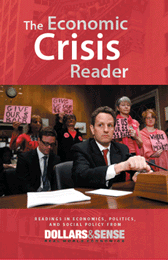
This article is from the November/December 2009 issue of Dollars & Sense magazine.
Subscribe Now
at a 30% discount.
In recent recessions, state and local governments have been among the few sources of economic stability and employment growth. This is why the recent fall in government employment, including a loss of 37,000 local government jobs in September 2009, has alarmed, even shocked, observers. But without serious action, a sharp drop in government employment, with a loss of a million jobs or more, is what we can expect over the next year. This has implications for the economy as a whole and also for the well-being of large parts of the American public who depend on state and local government services. Two intrinsic features of the American system of government come together to threaten a social disaster: the limited capacity of state and local governments to spend beyond their immediate revenues even in the harshest economic crises, and our peculiar federal system in which education and social services are largely funded by local and state authorities rather than by the federal government, with its deep pockets and ability to spend beyond its revenues as needed to maintain existing services.
SEE ALSO:
State Budget Blues, by Marianne Hill.
When tax revenues fall and demands for services rise during an economic downturn, the federal government sells bonds to cover its expenses, bonds often paid for with money printed by the Federal Reserve. States cannot do this. In 49 states, state constitutions requires a balanced budget, a requirement further enforced by bond-rating agencies and financial institutions, which threaten to lower the rating and raise the interest rate on bonds issued by states facing declining revenues and rising spending.
Together, constitutional requirements and the pressure of bond-raters require that state governments respond to economic recessions and declines in revenue with budget cuts. This makes state and local spending pro-cyclical, moving up or down with the economy, reinforcing downturns rather than acting counter-cyclically to ameliorate economic recessions. Not only is pro-cyclical spending by states and localities bad macroeconomic policy, but a peculiar feature of American federalism ensures that reducing spending during economic downturns is especially hard on investments in infrastructure, human capital, and the welfare of needy Americans. This is because problematic funding of states and local governments parallels a division of labor in the American system. With its deep pockets and elastic spending, the federal government is responsible for the military and for a few special programs, notably retirement pensions and health care for the elderly. States and localities, with rigid restrictions on spending, are responsible for education, local infrastructure, and social services. Federal spending, for example, accounts for only 8% of education spending in the United States, compared with nearly 83% from states and localities. When economic circumstances drive down tax revenues and increase the need for services, there is always money for the federally-funded military; but states and localities have to scramble to coordinate spending cuts and tax increases to balance budgets. They reduce social services, hitting the poor and middle-class, the young, the needy, and the disabled, just when the need for services is greatest.
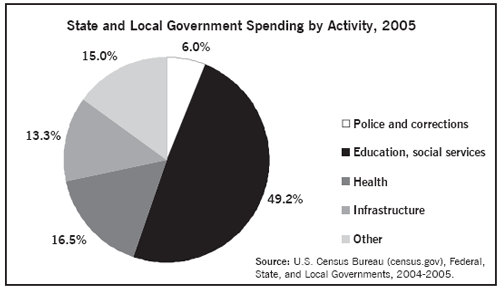
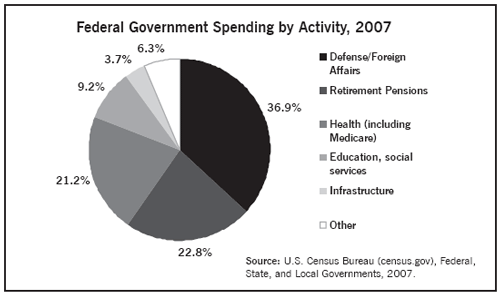
The crisis facing the states has just begun and threatens to get worse, much worse. Special circumstances delayed the collapse of state and local government services in the current crisis. While state tax revenues are running more than 10% below last year’s level, and have already fallen to the 2005 level, most states have been able to balance their budgets without draconian cuts because of two special circumstances. First, heading into the recession, 41 states had “rainy day” funds with an average balance of nearly 3% of revenue. These funds, mostly exhausted now, helped to cushion the initial decline in revenue. Second, the federal government came to the rescue with the American Recovery and Reinvestment Act (ARRA). Under the ARRA, the “Obama Stimulus” program, the federal government in effect shared its elastic borrowing capacity with states by granting them nearly $100 billion in immediate fiscal relief with another $230 billion in supplemental and competitive grants.
Rainy day funds and ARRA allowed most states to balance their budgets in the past two fiscal years with cuts of “only” $168 billion. Unfortunately, both the rainy day funds and the ARRA will be exhausted long before the recovery of state and local revenues. Under an optimistic forecast, the combination of declining revenues, rising demand for services, and the withdrawal of ARRA aid will force states to cut as much as 4% of their spending each fiscal year through 2013; if the economic recovery slows the cuts will have to be as much as 8% of spending. Even this forecast may be too optimistic. A recent report by the Center on Budget and Policy Priorities finds that revenue shortfalls in the current fiscal year are forcing 26 states to reopen their budgets and cut an additional $16 billion, or 4%. In the current fiscal year, 48 states have already reduced spending or increased revenues by $178 billion, or 26%, the largest budget gap on record. In the next fiscal year, 2011, budget gaps are projected to be $80 billion for 35 states, or 14%, and this total is likely to grow to over $180 billion as revenues continue to deteriorate. Deficits of this magnitude will require further state and local spending cuts and revenue enhancements made even more punishing than previous rounds because of the exhaustion of rainy-day funds and ARRA aid. Ironically, by reducing employment and spending, cuts of these magnitudes will slow any recovery, making the less-optimistic forecast more likely.
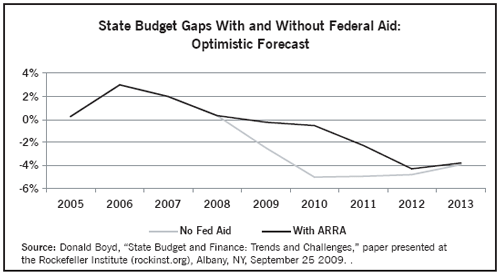
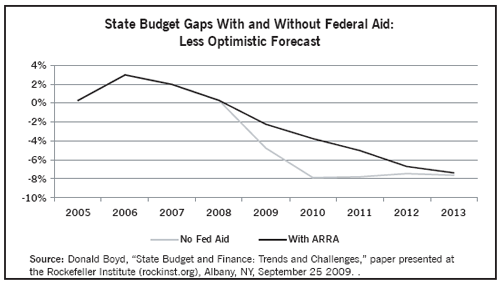
The division of labor in American federalism creates the fiscal pressure causing these draconian budget cuts and places them squarely on the infrastructure investments and education and social services financed at the state and local levels. There is nothing new in this depressing analysis. Early-19th-century politicians like John Quincy Adams and Henry Clay, for example, wanted the federal government to use its more elastic and expansive revenue stream to provide more adequate funding for education and welfare as part of a broad national program of internal improvements. Before the Civil War, their proposals were rejected by southern politicians who dominated the federal government. Southern secession in 1860-61 opened the door to a more active federal role. Under the Morrill Act of 1862, the federal government provided land grants to establish public universities in every state, and in 1867, a federal Department of Education was formed building on the work of the Freedman’s Bureau and charged with promoting education and learning.
Over the next 20 years, measures were proposed to expand the federal role in education, including the 1870 Hoar Bill, sponsored by Massachusetts Senator George Hoar, to “compel by national authority the establishment of a thorough and efficient system of public instruction throughout the whole country.” The most sustained efforts were led by Senator Henry W. Blair of New Hampshire whose so-called Blair Bill would have provided federal funds to states for education with extra funds provided states with high levels of illiteracy. Despite this provision, that would have sent additional funds to the South, white southern Democrats repeatedly voted down Blair’s bill because it required that funds be expended on free common schools to all children without distinction of race or color. Some northerners resisted this expansion of federal spending, especially on southern schools. The Blair Bill was anathema to southern planters and politicians who feared, as one put it, “the difficulty of controlling more educated Negroes.”
The determination of southern politicians to control their African American and poor white labor force led them to stymie efforts to use federal funds to expand access to education and, later, to social welfare benefits. The Hoar Bill or the Blair Bill could have been enacted; we could finance education or welfare nationally using the relatively abundant and elastic federal tax system. Their defeat, and the defeat of later measures, left the financing of education and welfare on the state and local level because it was a decision made by politicians to accommodate entrenched local oligarchs, especially southern planters. Had the American left been politically stronger or legislatively more astute, we could have had a different fiscal regime. Maybe we still can. And then maybe we’ll have adequate financing of education and human services; and the Pentagon will have to hold bake sales to buy bombers.
The mismatch of needs and revenues on the state and local level threatens social services and endangers needed investments in health, in transportation, in green technology, and elsewhere. If we allow this to happen, cuts in state and local spending will chase the economy down the hill to economic recession or worse. All of us, including the needy, the poor, the young, the disabled, and the sick will pay the price. Building on the ARRA program, we can insist on a renewed program of federal support for states and localities. This would avoid the worst effects of the current crisis but it would be better to eliminate the problem, the standing threat of local fiscal failure to essential programs of social insurance and investment, with a renewed revenue sharing program which would place a floor under state revenues. Even better would be to fund these programs with federal dollars, spreading the umbrella of the federal government’s elastic revenue stream over them so as to give all Americans equal access to schooling and social services, regardless of what states they live in. In this way, we would give education, health care, the environment, and other services the same fiscal priority we now give the military.
For two centuries, racists used a “states’ rights” to block national programs. By dismantling segregation, the Civil Rights movement eliminated this obstacle. We now have the opportunity to bring Lincoln’s “new birth of freedom” to all Americans by moving our federal system away from the shadow of states’ rights and, as the late Hubert Humphrey said, to “walk forthrightly into the bright sunshine of human rights.” It is only our political failure that leaves infrastructure, social services, and education on the chopping block to be decimated by state and local budget balancers who are bound to match expanding spending needs with shrinking revenues.
Did you find this article useful? Please consider supporting our work by donating or subscribing.
